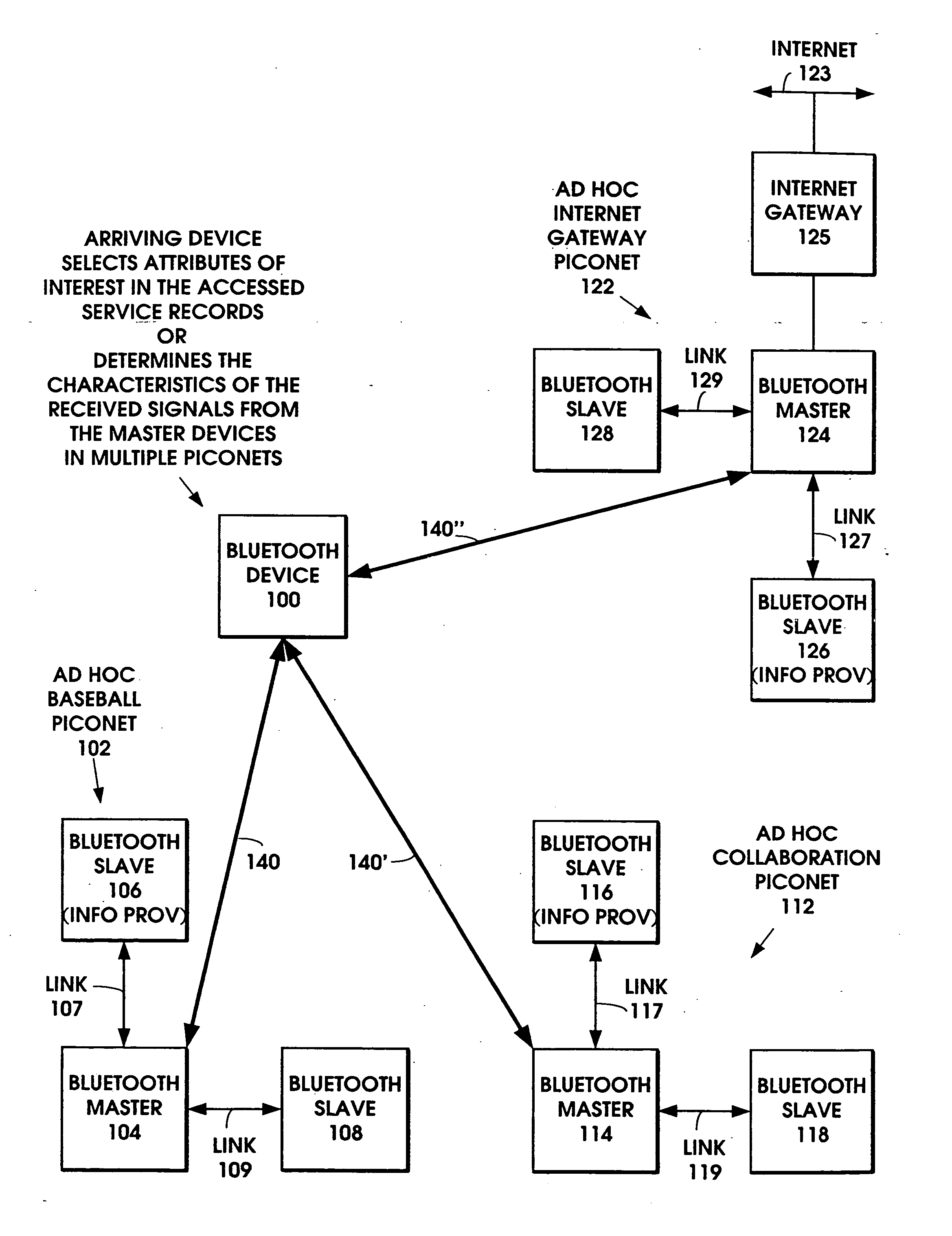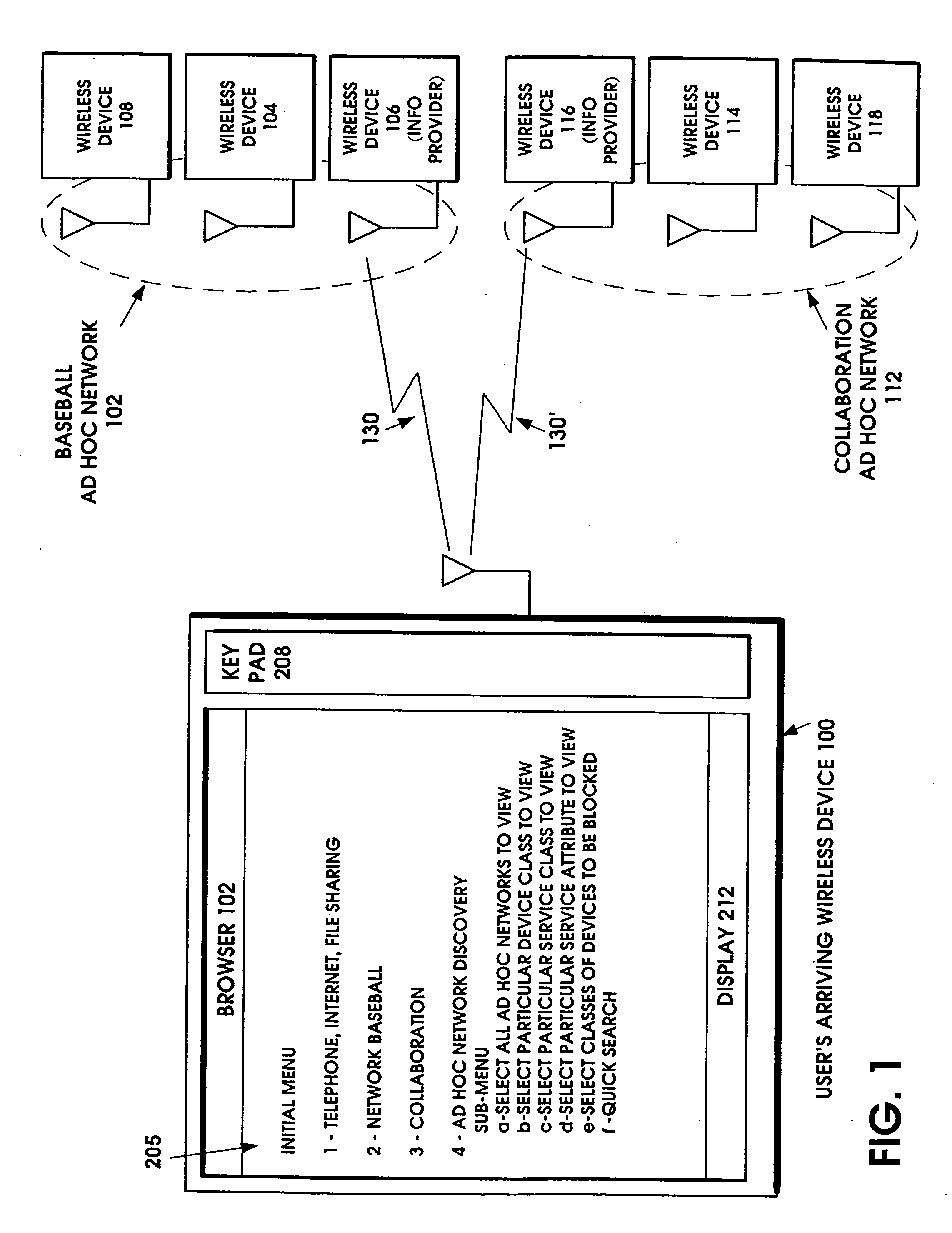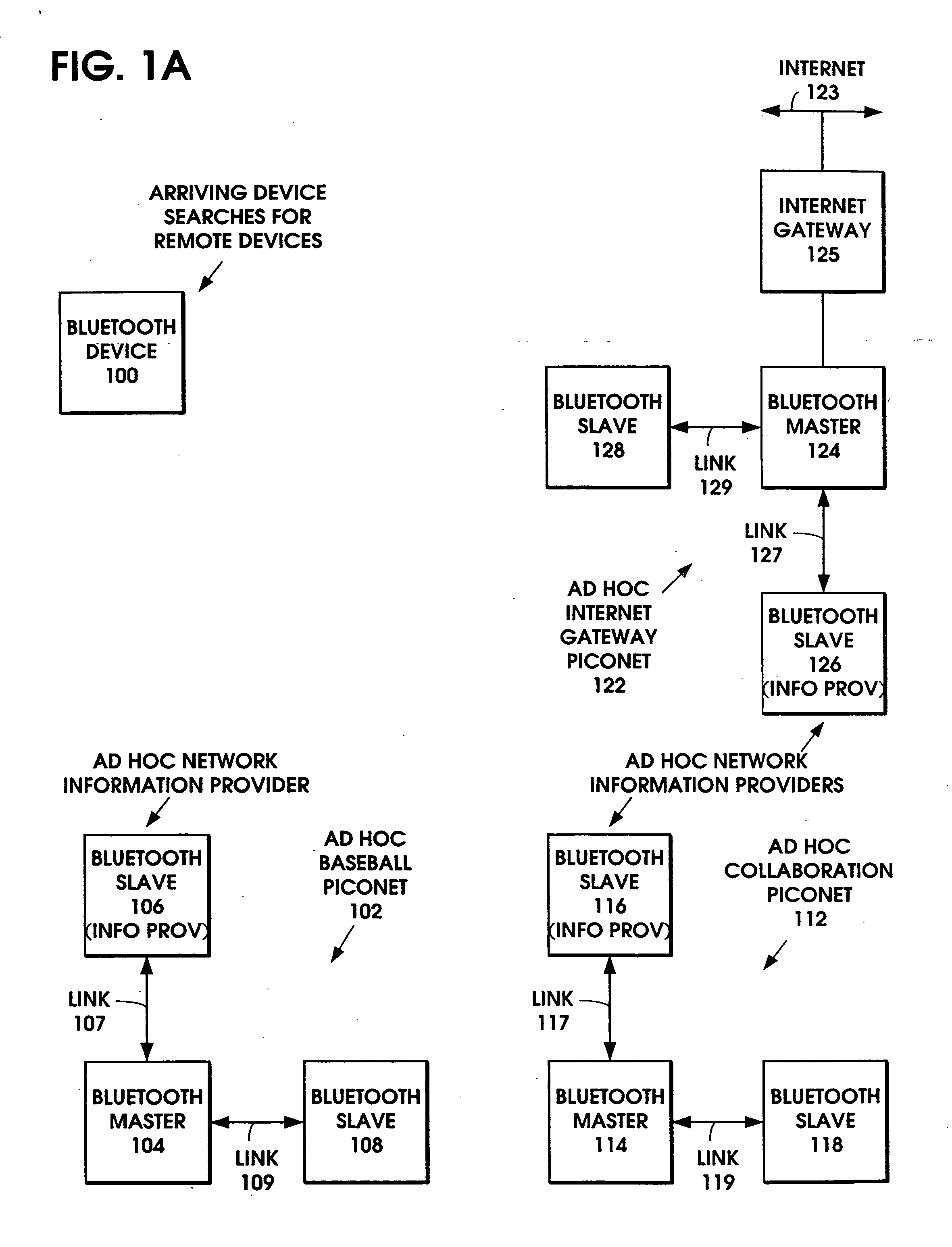Ad hoc network discovery menu
a network discovery and menu technology, applied in the field ofubiquitous computing, can solve problems such as requiring greater power consumption
- Summary
- Abstract
- Description
- Claims
- Application Information
AI Technical Summary
Benefits of technology
Problems solved by technology
Method used
Image
Examples
Embodiment Construction
[0079]FIG. 1 applies to all wireless standards supporting ad hoc networks. The ad hoc network discovery menu invention can be described by continuing the example mentioned above, of a passenger who has arrived at an airport and is now waiting in the airport lounge for a flight to another destination. The passenger carries a wireless device 100, which can be in the form of the Personal Digital Assistant (PDA) shown in FIG. 1. On the way to the airport lounge, the passenger has passed kiosks providing fax machines and printers to the pubic that can be wirelessly connected to by means of wireless devices mounted at the kiosks. Signs around the airport urge passengers to “Scan your Wireless” to advertisements of duty-free offers. The passenger looks about the lounge and sees a number of other passengers focused on their laptops and PDAs. Several of them appear to be collaborating with each other, since they join in animated laughter or converse while working on their computers.
[0080] I...
PUM
 Login to View More
Login to View More Abstract
Description
Claims
Application Information
 Login to View More
Login to View More - R&D
- Intellectual Property
- Life Sciences
- Materials
- Tech Scout
- Unparalleled Data Quality
- Higher Quality Content
- 60% Fewer Hallucinations
Browse by: Latest US Patents, China's latest patents, Technical Efficacy Thesaurus, Application Domain, Technology Topic, Popular Technical Reports.
© 2025 PatSnap. All rights reserved.Legal|Privacy policy|Modern Slavery Act Transparency Statement|Sitemap|About US| Contact US: help@patsnap.com



